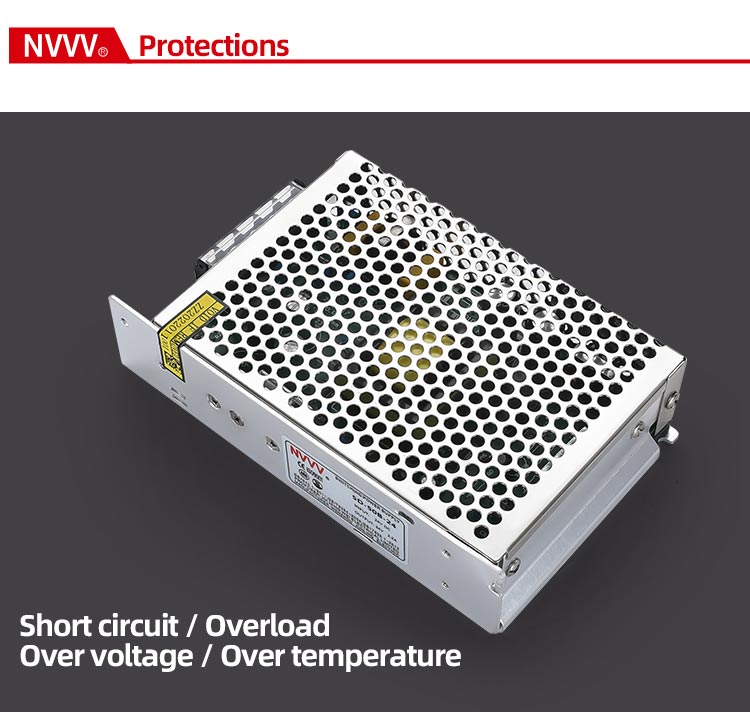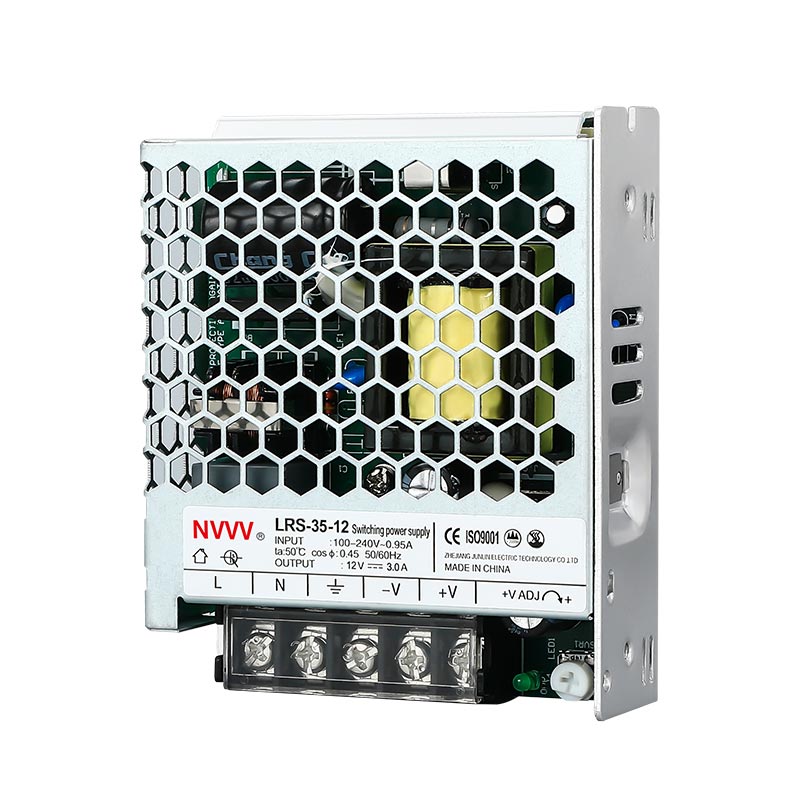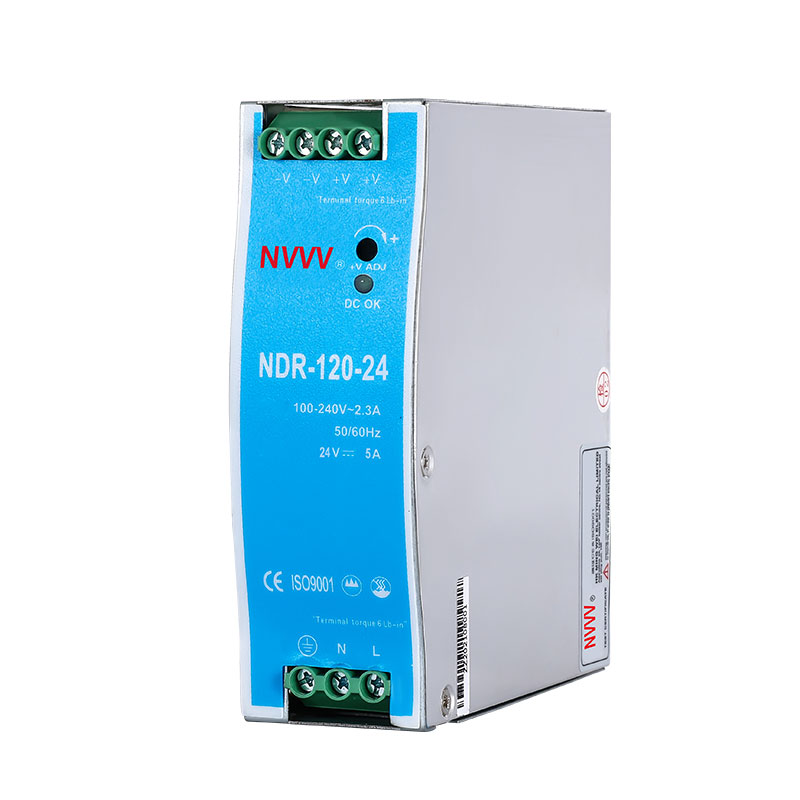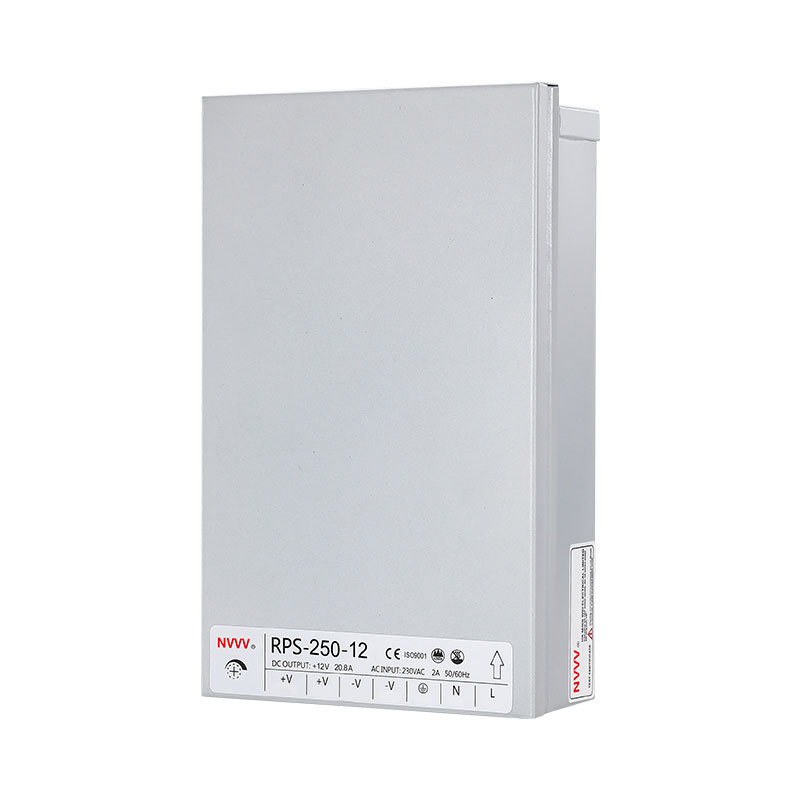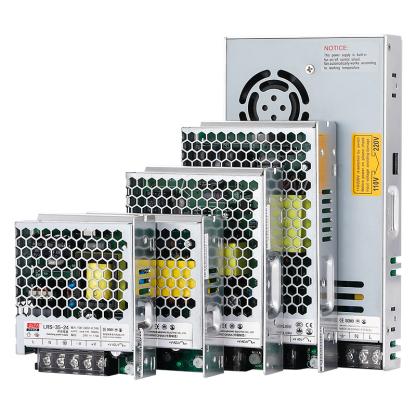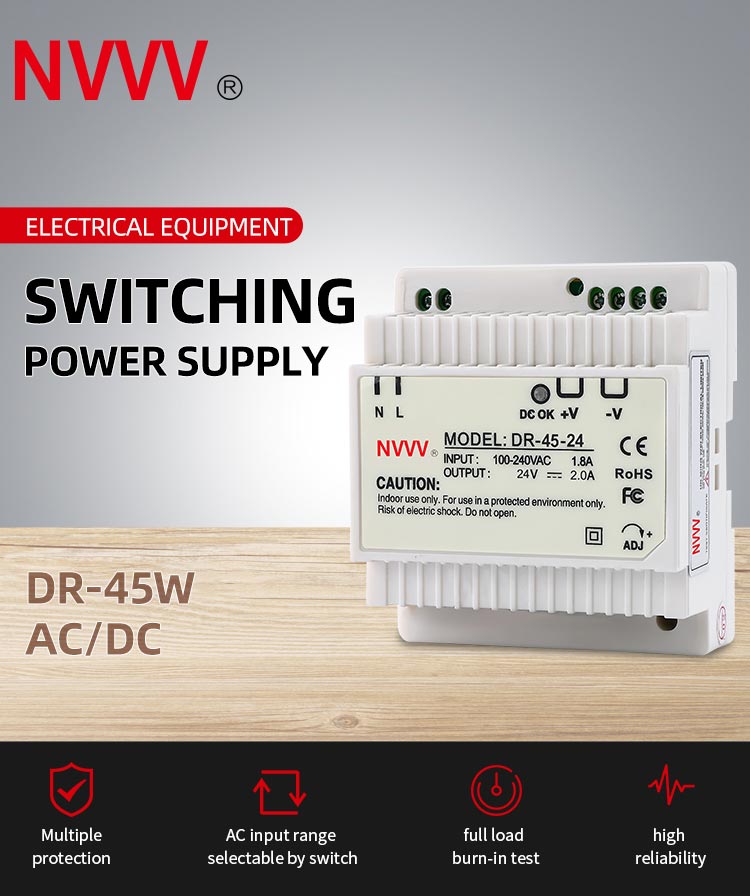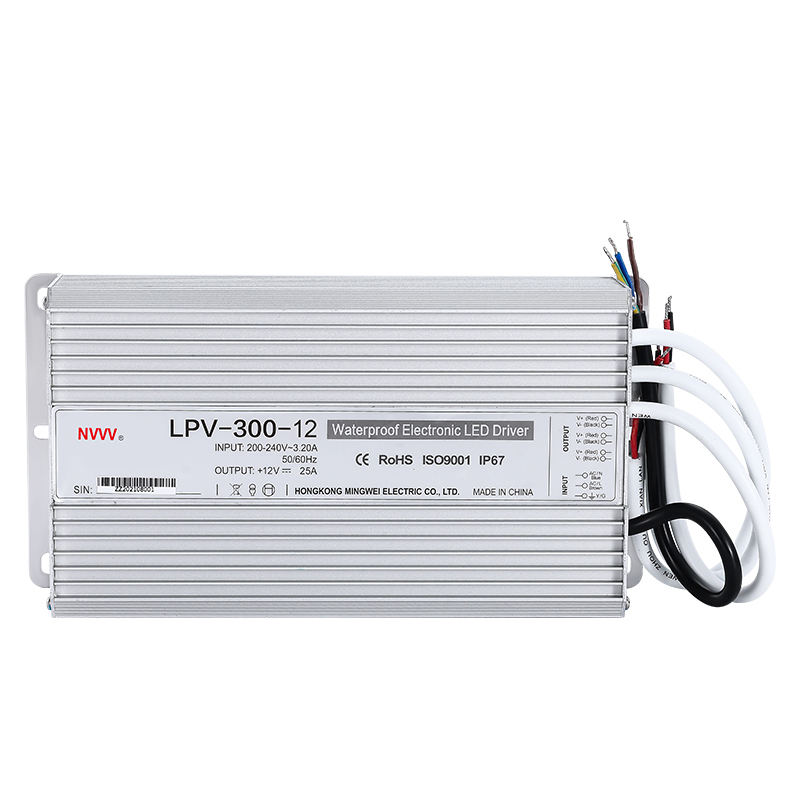What is 24v dc power supply
In today's era of rapid technological development, the importance of electricity as the infrastructure of modern life and industrial activities is self-evident. As electronic equipment develops toward higher precision and complexity, various industries have increasingly stringent requirements for power supplies, especially in terms of voltage stability and current reliability. Among many types of power supplies, DC power supplies have become core equipment because of their ability to provide stable DC power, especially 24V DC power supplies, which play an indispensable role in many industries. From industrial automation to renewable energy systems, 24V DC power supplies cover a wide range of fields. It not only ensures the normal operation of equipment, but also provides a solid foundation for technological innovation and safety. The following article introduces the basic working principle of DC power supply in detail, discusses in depth the characteristics and applications of 24V DC power supply and how to choose the appropriate DC power supply model according to different needs, revealing the core position of this key component in modern technology, hoping to provide readers with Friends, some different reading experiences.
Basic concepts of DC power supply
A DC power supply is an electrical device that converts alternating current (AC) into direct current (DC). DC power supplies are an indispensable component in modern electrical and electronic applications, as many devices require stable and controllable current and voltage to function properly. In order to understand the working principle of DC power supply, we first need to distinguish the basic characteristics of AC and DC.
Alternating current refers to a form of electrical current in which the direction and intensity of the current change periodically. It is the type of current used in most power transmission and large-scale power systems. In contrast, the direction and intensity of DC current remain constant, making it ideal for electronic equipment that requires a stable power supply, such as computers, communication equipment, and precision instruments.
The key components of a DC power supply include transformers, rectifiers, and voltage regulators. The purpose of a transformer is to adjust the voltage entering the power supply to the desired higher or lower voltage level. Once the voltage is adjusted to the appropriate level, the rectifier steps in and is tasked with converting alternating current into direct current. Rectifiers can be in half-wave, full-wave or bridge configurations, with each type having its specific applications and efficiencies.
In addition to the rectification process, DC power supplies often include a filter, whose purpose is to smooth the voltage pulses generated during the rectification process, thereby reducing the noise of the power supply and improving the quality of the output. Filters typically utilize capacitors and inductors to smooth out voltage fluctuations, a key factor in ensuring stable operation of equipment.
Finally, the addition of a voltage regulator further ensures that the output voltage is within a predetermined safe range, protecting sensitive electronic equipment from voltage fluctuations. Voltage regulators can be linear or switching, and each type has its pros and cons. Linear regulators excel in low-power applications because of their simplicity and smooth output, while switching regulators are suitable for high-power applications, although they may produce more electrical noise.
Through the collaborative work of these components, DC power supplies can provide stable and reliable power support for various electronic devices, which is crucial for the development of modern technology and maintaining the daily operations of society. Understanding these basic concepts can help you better understand the importance and complexity of DC power supplies and why they are so central to electrical engineering and electronic product design.
Characteristics and applications of 24V DC power supply
The 24V DC power supply is a power supply device particularly suitable for applications requiring moderate voltage and current levels. This type of power supply is commonly used in industrial control systems, automotive electronics, aerospace, military equipment, and certain types of consumer electronics. The voltage level of 24V provides a good balance point, it is high enough to transfer energy efficiently without excessive current, thereby reducing energy loss in the line, while being low enough to ensure safe use.
Features
One of the main features of 24V DC power supply is its relatively high safety. Compared to high-voltage power supplies, 24V is less likely to cause serious injury to operators, making it ideal in environments where manual intervention or maintenance is required. In addition, 24V systems can reduce insulation requirements, thereby simplifying equipment design and reducing costs.
Another important feature is its good stability and reliability. 24V DC power supplies are usually equipped with efficient voltage stabilization and filtering systems, which can provide very smooth current output, which is necessary for high-precision electronic equipment and sensitive instruments. For example, medical equipment, laboratory instruments, and precision manufacturing equipment often rely on this stable supply of power to ensure their accuracy and reliability.
application
In industrial environments, 24V DC power supplies are widely used in control systems, sensors, robots and other automation equipment. These devices require reliable power to ensure continuous operation and high efficiency. In the automotive industry, 24V DC power supplies are used in the electronic systems of heavy-duty vehicles such as trucks and buses. These systems include engine management systems, lighting, alarm systems, and starting systems. 24V power supplies are favored because of the high efficiency and durability they display in these applications.
In addition, 24VDC power supplies also play an important role in the field of renewable energy. For example, in solar power systems, 24V power supplies are used to store and regulate energy collected from solar panels. These power supplies must be able to handle changing input voltages while providing a stable output voltage to a home or commercial facility.
In short, 24V DC power supply is widely used in many fields because of its safety, stability and multi-function characteristics. Its ability to ensure equipment operating efficiency and operational safety makes it the power solution of choice for many engineering and technical applications. The design and application of this power supply fully embodies the key role of electrical engineering in modern technology and demonstrates the creativity and innovation ability of engineers in meeting real-world needs.
Design and composition of 24V DC power supply
The design of a 24V DC power supply involves multiple key components, each with its own unique function, working together to ensure efficient operation and long-term reliability of the entire system. Understanding the role and interaction of these components is critical to optimizing power supply design.
transformer
The main role of a transformer in a DC power system is to adjust the voltage to the required level. For 24V DC supplies, transformers typically step down from a higher AC voltage (such as the 110V or 220V AC that powers homes or industries) to a lower voltage level more suitable for the specific application. This step is critical because it first ensures that the voltage levels meet the safety and performance requirements of the device.
Rectifier
The task of the rectifier is to convert the alternating current output from the transformer into direct current. This is accomplished by using a diode, an electronic component that only allows current to flow in one direction. Bridge rectifiers are very common in 24V DC power systems and use four diodes connected in a specific way to efficiently convert AC to DC. The rectified current often contains fluctuations or pulses, which need to be smoothed by subsequent filtering and stabilization processes.
filter
Filters play a vital role in DC power supplies, as they are responsible for eliminating voltage fluctuations generated during the rectification process. This is typically accomplished with capacitors and inductors, components that help smooth the output voltage, reducing peaks and valleys, resulting in a more stable DC output. For precision electronic equipment, such as medical instruments and precision measurement equipment, high-quality filtering is essential because these equipment have extremely high requirements for power supply quality.
Stabilizer
After rectification and filtering, the voltage regulator is responsible for the final step of ensuring that the output voltage remains at a constant level. Even if the input voltage or load conditions change, the voltage regulator can adjust the internal circuitry to maintain a stable output voltage. In a 24V DC power system, either a linear regulator or a switch mode regulator can be used. Linear regulators are favored for their simplicity, reliability and low noise, while switch-mode regulators are widely used in high-power applications because of their high efficiency and adaptability.
control logic
Modern 24V DC power systems usually also contain certain control logic that is used to monitor and regulate the performance of the power supply. This may include temperature monitoring, real-time feedback of output current and voltage, and fault detection. These functions are usually implemented through a microprocessor or a dedicated control IC, allowing the power supply to operate intelligently and automatically adjust parameters to cope with different operating conditions and needs.
Overall, the design and composition of a 24V DC power supply is a complex engineering challenge involving multiple aspects of electrical engineering. From the initial voltage adjustment of the transformer to the complex electronic controls, each step must be precisely coordinated to ensure that the power supply not only meets specific performance requirements but also operates stably and reliably in a variety of environmental conditions. This continuous advancement in technology drives innovation and diversity in electronic devices, demonstrating the critical role of engineering design in meeting the needs of modern technology.
Precautions for selecting and using 24V DC power supply
When selecting and using a 24V DC power supply, several key factors must be carefully considered to ensure the performance, safety and long-term reliability of the power system. Understanding these selection criteria is critical for any application requiring DC power.
power supply
When selecting a 24V DC power supply, the first consideration is power requirements. Power (expressed in watts or kilowatts) is the energy output by a power source. When selecting a power supply, ensure that its maximum output power can cover the needs of all loads, including the total power of all devices to be connected. Calculations should also allow for some margin to account for potential power fluctuations or future expansion needs. Insufficient power output may cause the power supply to overload, affect equipment performance, or even damage the power supply or load equipment.
stability and efficiency
The stability and efficiency of the power supply are also very critical selection criteria. A high-efficiency power supply can convert more input power into output power while reducing wasted energy (such as heat). A high-efficiency power supply not only reduces operating costs, but also reduces heat generation and improves the overall reliability of the system. In addition, stable output voltage and current are critical to ensuring the normal operation and extending the service life of connected devices. Unstable power can cause equipment to reboot frequently or, in extreme cases, damage sensitive electronic components.
Safety performance
Safety is an important factor in any power supply selection. A qualified 24V DC power supply should have complete safety certifications, such as CE, UL or other international safety standards. These certifications prove that the power supply design and manufacturing comply with strict safety regulations. In addition, the power supply should have safety features such as overload protection, short circuit protection, overvoltage protection and overheating protection. These protection measures can automatically cut off power when abnormal conditions occur, preventing damage to power supplies and load equipment, and ensuring user safety.
Additional features
Modern 24V DC power supplies may include many additional features such as programmable control, remote monitoring and diagnostic capabilities. These functions are available via a web interface, allowing users to remotely adjust power settings or monitor its performance and health. For example, some high-end models may support software updates over the network that enhance their functionality or improve performance. In addition, some power supplies may feature a modular design, allowing users to easily add additional power modules as needed. This flexibility is particularly useful for systems that may expand in the future.
In summary, selecting and using a 24V DC power supply is a process involving multiple technical and safety considerations. The right power supply not only meets existing needs, but also anticipates future expansion and provides users with long-term reliable service through its stable, efficient and safe performance. When making a selection, all technical specifications and features should be carefully evaluated to ensure that the power supply will fully meet the requirements of the specific application.
Conclusion
With the development of technology, the role of DC power supply is becoming more and more important in modern society. As a medium-voltage power supply, the 24V DC power supply has advantages in safety, stability and reliability, allowing it to provide necessary power support in a variety of applications, thereby ensuring efficient operation and safe operation of equipment. When selecting a 24VDC power supply, considering its complexity and high performance requirements, we must carefully evaluate its technical specifications and functions. In the future, with the further development of technology, it is expected that more efficient and intelligent DC power solutions will emerge to meet the growing global power demand and environmental protection standards. This is not only a challenge but also an opportunity for electrical engineering, demonstrating engineers' ability to innovate and be socially responsible in creating safer, more efficient power systems.

